YouTube Algorithm: Updated Guide to How YouTube Algorithm Works in 2021
The YouTube algorithm has gone from favouring View Count to Watch Time to a Recommendation based on Deep Learning. Updating constantly for enhanced viewer experience, YouTube with over 2 Billion users has truly made viewer the king!

YouTube is a platform that started out “just for sharing videos”, however, quickly became true to its potential. Ever since its takeover by Google, Youtube has been glowing and proving to be full of opportunities for marketers, brands, video creators, and of course, content consumers. By always being open about their algorithm, YouTube is helping creators understand the best practices to sour in rankings & engagements.
In this blog, we will breakdown the working of the YouTube algorithm, and how it came to be. Stay tuned!
- What do you mean by the YouTube algorithm?
- Youtube algorithm throughout the years
- How does the YouTube Algorithm work in 2021?
- Search
- Suggested Videos
- Trending Section
- How to Optimize YouTube videos for its Algorithm
- How are videos ranked in the YouTube SERPs?
- How can a creator know if viewers return to their channel after a long time?
- Take help of Call-to-Actions to drive engagement
- Learn the language of YouTube Analytics
What do you mean by the YouTube algorithm?

The YouTube algorithm is simply, in YouTube’s terms “a real-time feedback https://support.google.com/youtube/answer/6342839 loop” system, based solely on viewer-to-viewer interests, showing them the relevant and personalized content that will keep them on the platform for as long as possible. You must be wondering; how does the algorithm determine what the audience likes and what they don’t like.
The YouTube Creator Academy states that the algorithm achieves this by monitoring the following factors of audience behaviour:
- What they watch
- What they don’t watch
- How much time they spend watching
- Likes and dislikes
- Not interested’ feedback
Thus, as long as you remain in the good graces of audience and continue to create what they wish to watch, the algorithm will continue to favour your content!
Youtube algorithm throughout the years

With over 500 hours of content uploaded to YouTube every minute, and over 1 billion hours of watch time being generated every day by users, you must be wondering how does the algorithm decide what to show and to which viewer. Well, the answer to that question has changed every few years and became more complex each time. Let’s see what has the Youtube algorithm changed and worked throughout the years!
2005 – 2012: Rewarding View Count
Since its inception in 2005 and through its first seven years up till 2012, YouTube worked on a rather straight forward algorithm of view count, i.e., rewarding videos that get hundred thousands of views by showing them to all users on the platform, regardless of whether they are interested in the content or not. Naturally, this gave birth to the unnatural practise of inviting clickbait (we discuss this in detail later on), by misleading thumbnails and titles.
2012 – 2015: Rewarding Watch Time
After understanding the loopholes of their olden ways, in 2012, Eric Meyerson, Then Head of Content Creator Communications at YouTube, announced a refreshing change in their algorithm, i.e., rewarding watch time. This update was made to encourage people to spend more time watching, interacting, and sharing with the community, leading to surfacing of the videos that viewers actually watch, over those that they click on and then abandon, a brave attempt to kill off the evil of clickbait.
However, this led to two different reaction from the creators; firstly, there were creators who intentionally created shorter videos, in order to maintain a good retention rate, then there were creators who were making longer videos to produce a greater watch time and to land on the Homepage. Both these practises, no doubt, were leading to detrimental content.
2016: Algorithm based on “Deep Learning”
Image Source https://static.googleusercontent.com/media/research.google.com/en//pubs/archive/45530.pdf

In 2016, Google Product Engineers Paul Covington, Jay Adams, and Emre Sargin released a white paper, explaining the working of YouTube recommendation algorithm, based on a multitude of factors and supported by deep learning.
According to this fairly technical paper, the whole collection of videos known as video corpus are passed through two filters or funnels. The recommendation system funnels are as follows:-
- First, the video corpus is passed through the “candidate funnel”, which examines user’s viewing history on YouTube, generating a list of candidates in which the viewer has shown interest,
- Secondly, this pool is then sifted through the “ranking funnel”, for assigning a score. And with respect to this score, videos will be shown. Thus, building an algorithm solely to cater the needs of the viewer.
2017 – 2020: Removing Borderline Content & Demonetization
Image Source https://static.googleusercontent.com/media/research.google.com/en//pubs/archive/45530.pdf
While the algorithm based on deep learning was working out great for both creators as well as users, YouTube was facing another crisis, for which this algorithm did not prove to be helpful – creation and virality of borderline content.
YouTube defines Borderline Content as “Content that comes close to — but doesn’t quite cross the line of — violating our Community Guidelines ”, however, still spreads misinformation. Now, the answer was four Rs!

The Four Rs of responsibility of YouTube Algorithm:-
Removing harmful content.
Raise up authoritative voices.
Reward trusted, eligible creators and artists.
Reduce the spread of borderline content.
This has led to removal of over 100k videos from the platform due to hate speech, a 5 times spike in 2019. Moreover, termination of over 17k channels and removal of twice than usual comments, amounting to 500 million, in Q2 of 2019, as per data by YouTube News blog. As years go by, YouTube is becoming more and more adamant on this policy to provide safe content, free of hate or misinformation, on an open platform, by removal and demonetization. This has led to 70% of less watch time for borderline content on the platform, according to YouTube News blog.
How “Clickbait” went out of fashion?
The YouTube Algorithm clickbait when a user clicks through a video and leaves within the first few seconds, indicating that they did not get what was promised through the thumbnail and the video title. Meaning, a video generating a high click-through rate, but very low watch time, it is considered as clickbait by the algorithm, which drove a lot of controversy back in the day. This led the algorithm working in favour of watch time, rather than view count.
Today, the YouTube algorithm appreciates a video that produces both, a great click through rate and great watch time.
How does the YouTube Algorithm work in 2021?

As discussed earlier in this blog, the YouTube algorithm hack is a “real-time feedback loop” system, which produces a unique set of videos, tailored for each specific viewer, thus, aptly named as “algorithm that follows audience”.
With the current algorithm, YouTube aims to achieve a two-fold goal:
- Helping users reach videos they wish to watch
- Encouraging extended viewer engagement & satisfaction
Wojcicki announced that “when people come to YouTube searching for coronavirus topics, on average 94% of the videos they see in the top 10 results come from high-authority channels.”
There are in total 5 sections, where the Youtube algorithm impacts the videos that we discover:
Search
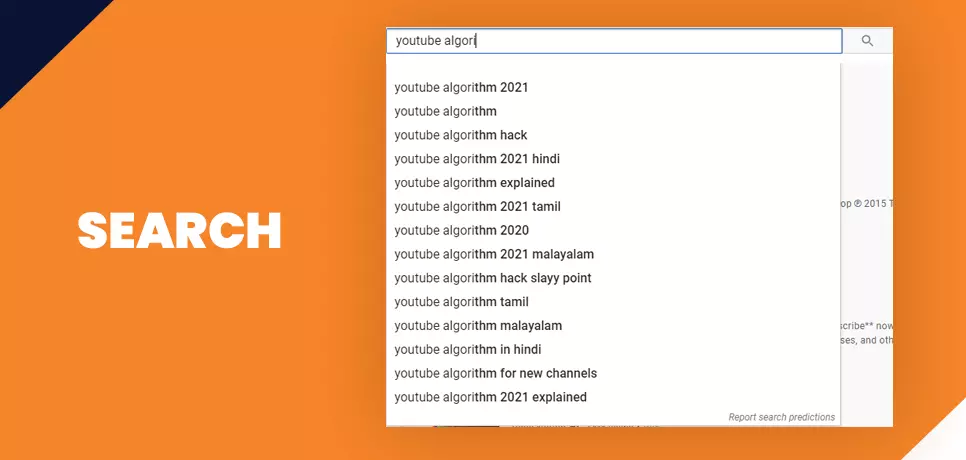
In the Search results, videos are ranked from top to bottom based on how well they resonate with the viewer’s query. Video engagement metrics such as its views, likes, shares, comments, watch time are considered along with the keyword query relevance with respect to its title, tags, description, transcript and the video content are given weightage.
They also examine how many viewers watched the particular’s channels videos in considering that particular channel’s ranking in your feed.
Algorithm examines the following while ranking a video:-
- Whether users clicked and watched it
- After clicking, how much time users spend on it
- How much engagement (likes, shares, comments, dislikes etc.) it got after clicking
- How latest and fresh the video is
- Frequency of that particular channel
- Frequency of that particular channel
- Session time
YouTube discovery ads is the paid option through google ads that videos can acquire positions above the organic ones.
Suggested Videos

The YouTube algorithm comes with a set of videos, exclusive to each viewer, showing up under the “Up Next” header. According to Pew Research Centre, 81% users occasionally watch videos recommended by the algorithm, while 15% users say that they do so quite regularly.
The videos in the Suggested window are recommended based on these factors:
- Videos that are topically related, could be from the same or a different channel
- Viewer’s YouTube watch history
- How well any video has satisfied similar users
- How users have engaged with similar videos
- How frequent the viewer watches videos of that particular channel
Trending Section
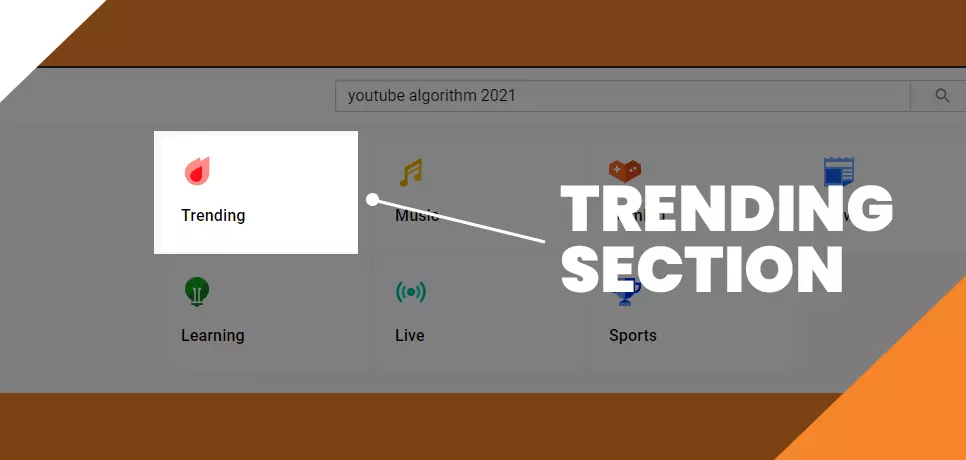
Described by The Creator Academy as a combination of “popularity and novelty”, the Trending Section shows videos that are new and trending in a viewer’s country.
The videos that appear in the Trending Section are decided on factors such as:
- View Count
- Rate of growth in Views
- Source of Views
Now, Music, Movies and Gaming are the current sections which come under trending, so the users can watch particular category video of their choice.
Home
The YouTube homepage is a great place for viewers to access content from channels they have subscribed to, at one place. The other videos which a user see is based on his/her watch history and personalization. Each viewer gets a feed tailored to exclusive to their viewing behaviour. According to Creator Academy, over 200 million different videos appear on users’ feed every day.
Which videos will appear on your Home feed depends on two factors:
- How well the video has performed in terms of engagement with similar viewers
- Viewer’s watch and search history
- What channels they view in the past
- How much time user spend on Youtube
Subscriptions
Under the Subscriptions Tab, a viewer can find videos from the creators and channels they have subscribed to, including highlighted videos and latest uploads. View velocity is one of crucial metrics of the algorithm which determines how much views the video got in first few hours after its publication.
How to Optimize YouTube videos for its Algorithm
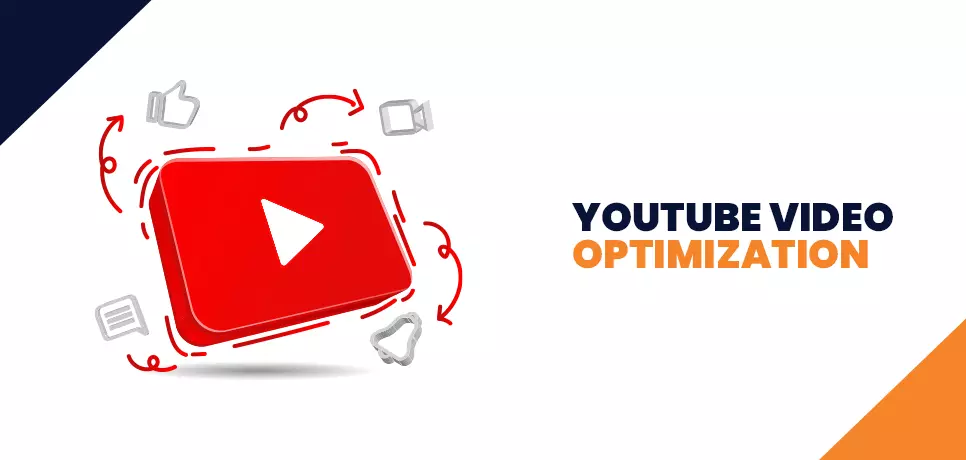
These are main things which YouTube considers while ranking your videos – engagement metrics, watch time and relevance of keyword search query. So to dominate ranking, use relevant keywords in title, tags, description, transcript and content. Secondly, for more engagement, focus on creating valuable content to increase overall watch time, audience retention, average session duration and a vibrant, descriptive thumbnail.
What YouTube has to say about the most frequently asked questions regarding reach and YouTube algorithm distribution
The Search & Discovery Team at YouTube answered some of the most asked questions from creators, that revealed a great deal about the working of current version of algorithm:
How will changing title & thumbnail of an underperforming video impact its performance moving forward?
Question Asked: Would it help to change the title and thumbnail of an underperforming video or would that make the algorithm lose confidence in the video?
What YouTube said: Yes, YouTube definitely recommends this practice, however, only when the video is receiving both a lower click through rate and fewer views and impressions than usual. However, they were clear that the result of doing so depends on how the creator’s audience reacts to this change, as the algorithm works on how audience behaves.
How does the YouTube Algorithm react to old & inactive subscribers of a channel?
Question Asked: Can old/inactive subscribers negatively affect the performance of a video? If the videos show up on subscription feed, the concern is this could lead to a lower CTR, resulting in the video not being suggested as much.
What YouTube said: The YouTube Team was quick to clear out that this is not considered as a major factor in their recommendation system. Their algorithm would avoid showing your videos to inactive subscribers as it knows that they are not interested, and in this manner, it prevents any negative impact.
How are videos ranked in the YouTube SERPs?

Question Asked: How is search rank determined?
What YouTube said: The videos are listed on the basis of Relevance and Performance (like we discussed earlier in this blog), rather than view count. The videos are ranked on the basis of how relevant the title, meta and content are to the query and how similar viewers has chosen to engage with it.
How can a creator know if viewers return to their channel after a long time?

Question Asked: Wish to statistics indicating how many viewers have returned to our channel after a year or more. Moreover, did they spend more or less time on their channel as compared to before?
What YouTube said: Regarding this Youtube announced that they are about to launch a new metric called “returning viewers and analytics”. This will allow creators to know how many new viewers are finding and watching their content and how many are returning. Moreover, if a viewer comes back to your channel after a year or so, they will be considered as new.
Why is subscribers count considered a relevant metric if the algorithm does not show content to all subscribers?
Question Asked: Why is subscriber count relevant if YouTube does not push out content to all subscribers, which maybe based on inactivity or lack of engagement towards the channel. Shouldn’t be videos be pushed out unless they have unsubscribed?
What YouTube said: YouTube shed light on the fact that the recommendation system pulls in videos rather pushing them and then ranks them based on various factors. Subscriptions is one of those ranking factors, however, not the major one. Moreover, studies have shown if subscriptions are considered as a major factor, then viewers are less likely to watch videos or come back to YouTube.
Does keeping several videos unpublished or private, in any way hamper the performance of the video once it is made public?
Question Asked: Does scheduling video as unlisted or setting it private first and public later on, going to impact my performance?
What YouTube said: Absolutely not, all that matters is how the audience is reacting to it, because that is where the recommendation system is learning from.
How does the recommendation algorithm respond to a multilingual channel?
Question Asked:
Can I upload videos in two different languages on my channel?
What YouTube said: YouTube recommends this practice only if your audience is multilingual. However, if that’s not the case, then it suggested to create different channels to cater to audience speaking different language.
Is there any relation between watch time and recommendation algorithm?
Question Asked: Does it need certain amount of watch hours before a video can be recommended?
What YouTube said: No, there is no threshold for one a video starts getting recommended. It all depends on how trending the topic is and how many new viewers are finding your videos, and how they are engaging with it.
What are the best practices to outsmart the YouTube algorithm?
After being through the nooks and crannies of the working of Youtube algorithm, it’s time to look the best of the best practices that will allow you to outsmart the YouTube algorithm and make it work in your favour!
Always conduct a comprehensive keyword research
As discussed, a few times in this blog, the SERPs ranking is largely dependent on the relevance of the title, description as well as content to the query of the user.
But how do you make your meta data relevant to the query?
The answer is – through keywords.
Conducting a comprehensive keyword through tools such as Keyword Planner, YouTube Search Auto Suggest feature, Google Trends, etc., allows you to find keywords your target audience is searching for. Use these relevant keywords in your title, thumbnail, as well as video description.
Take help of Call-to-Actions to drive engagement
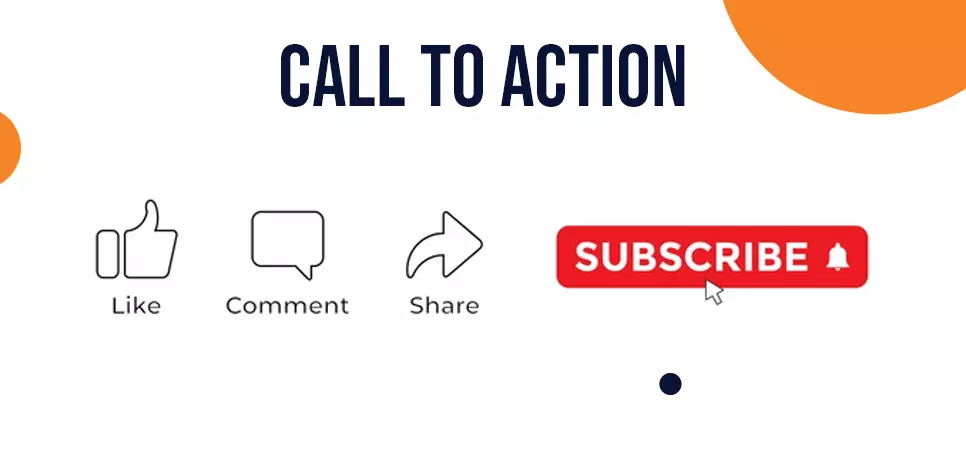
Clearly, engagement metrics such as likes, shares and comments are favourable factors that influence the YouTube recommendation algorithm, and using different Call to Actions on your channel is a great way to achieve that!
mple YouTube CTAs include:
- Watch till the end for a surprise
- Please hit the Like button
- Do not forget to subscribe to the channel
- Hit the notification bell for to get notified for future content
You can use these in the beginning or end of your video as well as in the video description.
Create organized playlists for an extended viewer experience
Playlists are a great way to hook the viewer for a longer time on your channel, generating a longer watch time, which is yet one of the major factors that influences YouTube’s Recommendation algorithm.
Here are a few great tips for creating effective playlists:
- Make sure the videos are topically linked with each other so the viewer does not feel lost.
- Try not to create very long playlists as it will hamper your watch time and the viewer might get bored.
- Optimise your playlists so that they appear in the Youtube SERPs.
Learn the language of YouTube Analytics
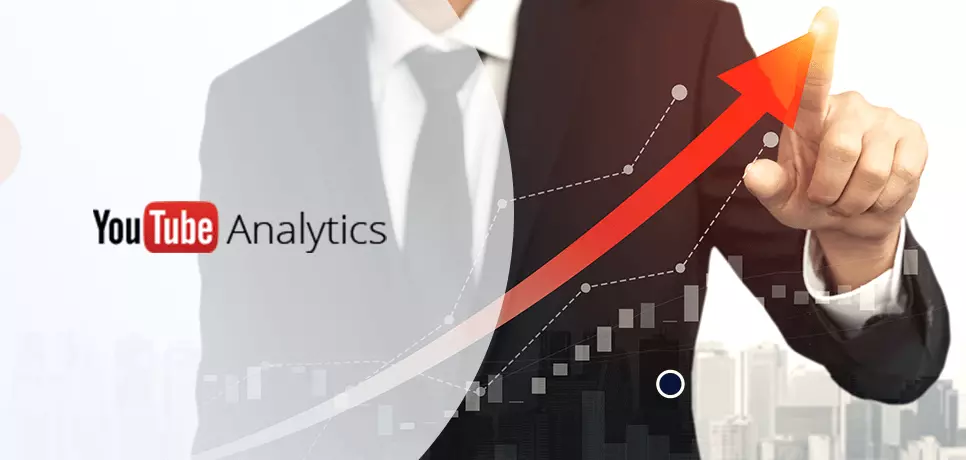
When it comes to understanding how the audience is responding to your content, YouTube Analytics is your best bet! With the help of metrics such as Impressions Click Through Rate, Demographics, Audience Retention, Average View Duration, Traffic Sources, etc. The YouTube Analytics allows you to analyse your best performing as well as your worst performing videos, and allow you to understand which practices are working in your favour, and which practices not so much!
To conclude this, I would like to lay stress upon the fact that the current version of the algorithm responds to your videos depending on how your audience as well as new viewers discovering your content are reacting and engaging with it. If they are loving it, then the algorithm will show it to interested viewers more aggressively. However, if they are not, the algorithm as well, will not promote its discoverability on the platform.
I hope you found this as a useful guide to understand how the YouTube algorithm works!
Feel free to share.